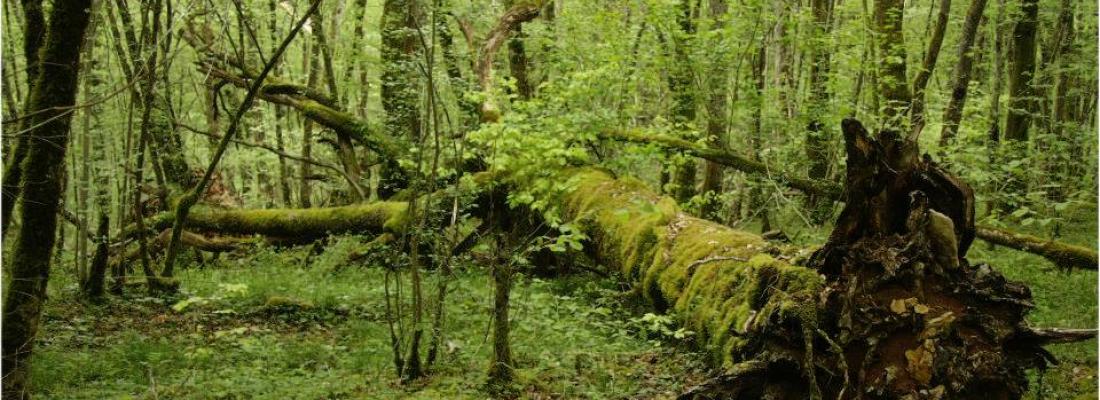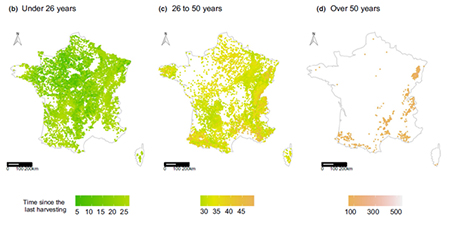3% of French forests have not been harvested for at least 50 years
Published on 16 December 2021

These forests play a key role in biodiversity and carbon storage, but their surface area and distribution in metropolitan France are poorly known. By using data from the national network of forest measurements in natural reserves, the study conducted by Lucie Thompson and her colleagues at LESSEM a National Forest Reserves network, published in December in the journal Diversity and Distributions, has made it possible to estimate the time since the last harvesting based on forest characteristics. We projected this model on an independent nation-wide dataset from the National Forest Inventory. This method is original because forest characteristics are usually studied according to the time since the last harvesting and not the other way round. This enables a continuous estimation which avoids debates on the time needed for a forest to return to its natural state.
The features which characterise overmature forests are very large trees, high volumes of deadwood and high diversity of tree-related microhabitats (such as cavities, peeling bark, etc). Moreover, the absence of stumps and the high density of coppices indicate forests which have not been harvested for several decades while characterising the legacy of past forest management and a strong human footprint.
We have shown that currently 3% of French forests have not been harvested for at least 50 years (this figure varies from 1 to 9%). It is the first robust statistical estimation: the previous estimation goes back to the 1990s and was based on experts’ assessments. These forests are mainly located in remote mountainous regions, but they can also be found in lowland areas. More surprisingly, our method showed that 43% of French forests have not been harvested for at least 26 years (and up to 50 years), which represents a potential of overmature forests in a near future.
However these forests are not protected, even though their conservation is crucial for biodiversity and the climate. Furthermore, more targeted methods are necessary to confirm this national estimation, which is based on statistics and probably does not cover all the forests which are of interest for conservation purposes. Thus, our study constitutes only one of the first milestones for the mapping and conservation of overmature forests in metropolitan France. This study reinforces the National Action Plan being prepared by the Ministry for the Ecological Transition and will be supplemented by ongoing studies on the mapping of overmature forests by using airborne LiDAR technology.

Reference: Thompson, L., Cateau, E., Debaive, N., Bray, F., Torre, A., Vallet, P., & Paillet, Y. (2021).
How much does it take to be old? Modelling the time since the last harvesting to infer the distribution of overmature forests in France. Diversity and Distributions, 00, 1–14. https://doi. org/10.1111/ddi.13436
Read the publication:
https://onlinelibrary.wiley.com/doi/10.1111/ddi.13436
